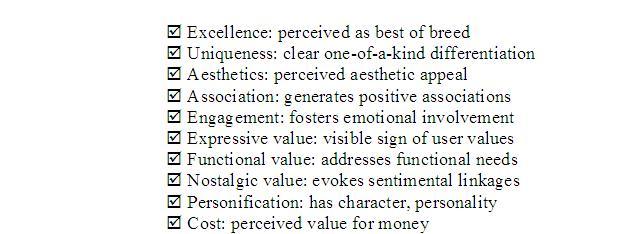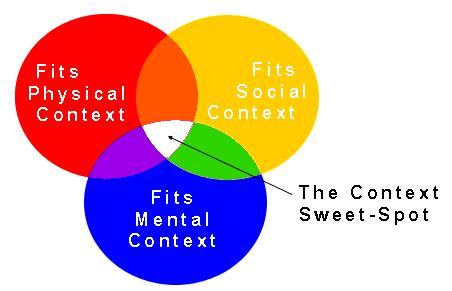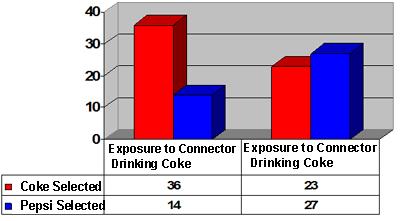How hits happen
The Two-Minute Tipping Point
Using the science of social epidemics, The Tipping Point explains the three simple principles that underpin the rapid spread of ideas, products and behaviours through a population. By applying these principles, the book outlines how marketers can help produce a ‘tipping point’ for a new product or service, the moment when a domino effect is triggered and an epidemic of demand sweeps through a population like a highly contagious mind virus.
• The Law of the Few
The Law of the Few states that the spread of any new product or service is determined by the initial adoption patterns of a small group of socially infectious early-adopters. Drawing from social network science and research into the diffusion of innovations, Gladwell explains how a combination of word of mouth advocacy and the copycat effect allows connected and respected early-adopters to drive product diffusion and act as gate-keepers to mass-market adoption. The infectious power of this special subset of early-adopters can be explained by their position as social hubs in peer networks, connecting everybody to everybody by six degrees of separation, thereby connecting businesses to their mass market. This network centrality combined with an early-adopter profile provides these socially infectious ‘connectors’, as Gladwell calls them, with a viral capacity similar to that of celebrities and expert opinion leaders to showcase and advocate new products, thereby kick-starting a word of mouth epidemic of demand.
It follows from The Law of the Few that we, as marketers, should be seeking to develop special relationships with these socially infectious connectors, focusing innovation on preferentially satisfying their needs rather than simply pandering to the fickle desires of the mass-market herd itself. ‘Focus on the consumers that count, the mass will follow’ is the Tipping Point marketing mantra. In the follow-up book to The Tipping Point, The Anatomy of Buzz helps us to do just this, distilling research on adopter types into a simple screening profile for identifying connectors (recently estimated by NOP to make up 10% of a target audience (Keller and Berry 2003)) based on their peculiar ACTIVE profile: Ahead in Adoption, Connected, Travellers, Vocal, Information Hungry, and Exposed to the Media (Rosen 2000 cf. Boyett & Boyett 2003, Godin 2001, McConnell & Huba 2003, Salzman et al. 2003, Silverman 2001, Weimann 1994). By recruiting these ‘consumers that count’ into research partnerships and panels, just as Procter and Gamble are doing with their ground-breaking Tremor panel, marketers can help generate the goodwill, involvement and positive word of mouth necessary for a new product or service to spread contagiously through a target population. 
Figure 1: The Law of the Few – Screening Profile for Infectious ‘Connectors’
• The Stickiness Factor
The second factor that influences the spread of any infectious agent through a population is its intrinsic contagiousness. Gladwell calls this ‘The Stickiness Factor’, borrowing from the media term used to describe how ‘sticky’ a channel or program is, that is, how ‘glued’ to it we are. Here The Tipping Point is most explicit about the key role of marketing in engineering a hit product, arguing that marketers should systematically ‘tweak and test’ new product and service candidates against key scientifically-informed criteria for diffusion success. As it happens, from the hundreds of studies on innovation diffusion (Rogers 1995), just a handful of key cross-category attributes emerge as key drivers for product success, and these have been most recently articulated in the Journal of Product Management, based on a meta-analysis of cult products and brands (Morris and Martin 2000). 
Figure 2: The Stickiness Factor – What makes an Innovation Infectious?
• The Power of Context
Thirdly and finally, The Tipping Point points to the fact that, like infectious diseases, products and behaviours spread far and wide only when they fit the context into which they are launched. For example, a wave of crime in the New York subway came to an abrupt halt by simply removing the graffiti from trains and clamping down on fare-dodging. The context changed and so did the people. This ‘Power of Context’ provides marketers with a powerful new strategy for developing new products and services: Focus on contexts as well as consumers. Consumers are contextual chameleons and will adopt your product if it fits the context, situation or occasion in which they find themselves. By testing and tweaking your product to fit the social, physical and mental context of use, the science of social epidemics states that the impact on future sales will be exponential. 
Figure 3: The Power of Context – Hitting the Context Sweet-Spot
From Tipping Point Dream to Tipping Point Reality
So there you have it, the three-point Tipping Point plan for creating a hit: "The Law of the Few", "The Stickiness Factor" and "The Power of Context" – all of which put marketing at the very heart of successful business. But does Tipping Point marketing deliver on its promise? Whilst it is still too soon to provide a definitive answer to this question, first results are promising with a number of major businesses, including Procter & Gamble, Unilever, Siemens and Microsoft successfully implementing Tipping Point initiatives to kick-start epidemics of demand. Before turning to these initiatives, we’d like to briefly share with you some new scientific evidence supporting the Tipping Point model.
Are Connectors Really Contagious? An Experiment
In December 2003, we tested the idea that connectors are indeed socially infectious in a field experiment on preferences for Coke or Pepsi at the London School of Economics. To do this we recruited a student connector, using a simple screening questionnaire based on the ACTIVE profile, to which were added two further criteria for social infectiousness from the psychology of influence - elevated social status among peers and physical attractiveness (Cialdini 2001). We then asked our connector to administer 100 street corner questionnaires in Houghton Street, London, to investigate student opinion on the UK government’s new plans to introduce variable university fees. Whilst administering the first 50 questionnaires, the supposedly infectious connector was instructed to be visibly drinking a can of Coke and for the final 50 questionnaires a can of Pepsi, although no mention of this or the brands was to be made. At the end of each interview, our connector was asked to offer a free can of Coke or Pepsi to participants as a thank you for participation. Would mere exposure to the visible adoption of Coke or Pepsi by our connector (independent variable) have an infectious influence on the choice of respondents (dependant variable), or would, as the null hypothesis suggested, their preferences be unaffected by what our connector happened to be drinking?
Results
As expected, when the socially infectious connector was drinking Coke, more people chose Coke (72%), and when he was drinking Pepsi, more people chose Pepsi (54%). The extent of the infectious influence was significant, even reversing the overall pattern of preference for Coke or Pepsi. A chi-square test (chi-square value = 6.986) rejected, with a very high level of significance (p < .01), the possibility that this outcome could have been produced by chance, allowing us to add further evidence in support of the Tipping Point model that connectors do indeed have a significant infectious influence on the preferences of those exposed to them. To verify that this infectious power of suggestion is specific to connectors, we replicated the experiment the following day, this time using a non-connector (without an ACTIVE profile) as the interviewer. As expected, the non-connector had no significant infectious influence on respondents; in fact people were less likely to choose Coke when exposed to the interviewer drinking Coke and less likely to choose Pepsi when exposed to the interviewer drinking Pepsi. The implication for marketers is uncomfortable but clear: Not all consumers are created equal. Some are more equal than others. By preferentially partnering the infectious ‘Few’, we will be focusing on the ‘consumers that count’, addressing the right needs of the right people who have the power to unleash a an epidemic of demand for our products and services. 

Figure 4: Contagious Connectors and the Hidden Power of Suggestion
Tipping Point Marketing in Action
Although the fact that the Tipping Point model is scientifically informed by both evidence and theory, the proof of the Tipping Point pudding for many business managers will lie in its demonstrable capacity to impact favourably on the bottom line. For this reason, we will conclude with several examples of successful Tipping Point marketing initiatives that have transformed the fortunes of brands.
• Post-It Notes: Saved by Connectors
Although Post-it Notes were around long before the publication of The Tipping Point, the story behind the little yellow stickies is a powerful example of the Tipping Point marketing in action. In 1968 Dr. Spence Silver, a research scientist for 3M, was trying to invent a new super-sticky glue. He failed, and did so quite spectacularly, coming up with precisely the opposite to what he had been looking for; a super-weak glue. Abandoned in an R&D lab for some six years, the failed invention was eventually put to use six years later by another 3M product development researcher, Art Fry. Fry was also a chorister at St Paul’s church, Minnesota, and was frustrated by the loose bookmarks that kept falling out of his hymnbook and preventing him from turning quickly to the appropriate page during the service. He decided to experiment with the abandoned glue, using it to coat one side of his bookmarks, in the hope that they would stay in place, and not damage the hymnbook. It worked. Fry had seen the light, and set about with the fervour of a new convert convincing 3M management of the commercial worth of his new, as yet unnamed, temporary sticky bookmarks.
This first part of the 3M Post-it Notes story may be familiar to many, but what is really interesting is what happened, or rather didn’t happen, next. Post-it Notes didn’t work. They worked fine functionally, but they did not work with consumers. They failed in concept testing, failed in prototype testing and even failed in a test launch. The failed fruit of an R&D department had failed in the market. However, just before pulling the plug on the whole sad affair, 3M gave Post-it Notes one last chance. They conducted a special seeding research project that put the product in the hands of highly connected secretaries to CEOs in large corporations. Specifically, each of these ‘connectors’ was sent entire boxes full of the yellow stickies, asked to share them with their colleagues, and then feedback on any potential uses that could be found for them. This ‘product placement in real life’ conducted in both the spirit and name of research changed the fortunes of Post-it Notes. By generating goodwill, involvement and positive word of mouth emanating from a few right people in the right place, the research project triggered an epidemic of demand. Almost immediately Post-it Notes started appearing on senior internal memos, on drafts, desks, and in reports, and the copycat effect ensured that the little yellow stickies spread infectiously through companies like a virulent virus to become the 5th largest selling office-supply product in America. Post-it Notes had been saved by connectors.
• Microsoft: Unleashing a Computer Virus of the Mind
The 3M success story illustrates how marketers can kick-start an epidemic of demand with ‘seed marketing’, that is, product trials that put the product in the hands of the right people, at the right time in the right place. This is The Law of the Few in action, product seeding trials conducted in the spirit and name of research that capture critical feedback from the consumers that count and kick-start product diffusion. The gold-standard of this type of marketing is perhaps Microsoft’s successful seeding programme involving trialling and ‘beta-testing’ soon-to-be-launched products. For example, for their record-breaking launch of Windows 95, Microsoft U.S. recruited 450,000 early-adopters to trial their new software just prior to launch, ensuring that one out of every 189 PC users in the US had a pre-release copy. This enabled Microsoft to capture critical pre-launch feedback for the mass market launch whilst giving the ‘consumers that count’ a unique preview of their product that would generate a word of mouth epidemic of demand. When the final product was launched on the stroke of midnight on August 24, 1995, one million copies of Windows 95 were sold in the first four days, making it the fastest selling software of all time, thrashing the previous record of 40 days to sell a million copies.
• Pfizer: Infecting People to Fight Infections
The pharmaceutical industry appears to be somewhat ahead of the curve in how new products are launched and marketed, and has been embracing the principles behind Tipping Point marketing for some time. The strategy for turning the Tipping Point dream into reality is industry-wide, but was made famous by the Columbia University study on Pfizer’s launch of tetracycline (Rogers 1995).
To launch a new drug, pharmaceuticals have to go through three rounds of mandatory trials; Phase I trials involve testing for safety, usually in a small number of healthy people, Phase II trials involve testing for efficacy, usually in a slightly larger number of sufferers, and Phase III trials assess comparative efficacy against competitors and determines side-effect profiles. However there exists a fourth round of trials that, whilst not mandatory, lie behind the success of virtually every blockbuster drug brought to market. Phase IV trials are the pharmaceutical industry’s equivalent to Microsoft’s beta-testing programme. Physicians who are both hubs of peer influence and early-adopters are recruited just prior to launch and invited to participate in product trials designed to get new products into their hands and onto their conversational agendas, as well as providing manufacturers with essential feedback for future innovation. These Phase IV trials typically involve getting physicians to prescribe the company’s new drug to a certain number of patients, and then feed back on its effects. The quid pro quo for the Phase IV trial participant is to have privileged access to the new product, often for free, and critically, be a voice that is listened to in the future development of products. It is a win-win relationship that increases the participant’s already elevated status among peers.
It’s marketing Jim, but not as we know it
Given The Tipping Point’s success, and the solid science and evidence that underpins it, we should not be surprised that a number of new Tipping Point marketing initiatives are now underway. Perhaps the boldest of these is Procter and Gamble’s new connector panel in the US of 200,000 infectious teen connectors, used seed new products. Although only set up in 2002, controlled studies have already shown that that the panel can produce an increase in sales volume of 14% (Klepacki 2003). Procter and Gamble are using Tipping Point marketing intelligently here; instead of marketing at teens who no longer want to listen, they are listening to them, putting new products in their hands and onto conversational agendas in the spirit and name of research. They are walking the marketing talk, putting the consumer not the marketer at the centre of marketing. Not only do such partnerships capture valuable feedback from the ‘Few’, they generate the goodwill, involvement and positive word of mouth that can ignite consumer networks and kick-start an epidemic of demand.
However, Procter and Gamble are far from alone in pioneering Tipping Point marketing, Unilever, Diageo, Pepsi and Ford among others are also trialling Tipping Point initiatives, and in summer 2003 we at Spheeris helped Siemens launch their new SL55 mobile phone using this viral seeding technique. These are exciting times to be in marketing; there is a huge opportunity to harness the Tipping Point formula and turn business dreams into profitable realities through scientifically informed marketing. There are also intriguing ethical issues for us to resolve, including how to ensure that seeding is conducted in the spirit, not just the name of research so that it forms the basis of genuine, lasting and transparent partnerships with consumers. Likewise, the implications – business and ethical – of the ‘The Stickiness Factor’ and ‘The Power of Context’ have yet to be unravelled and exploited. However, if we embrace The Tipping Point and its lessons for research, then one thing is certain: The future of business lies in our hands, the hands of marketers.
Artiklens forfatter, Dr. Paul Marsden kan opleves på DMF’s seminar om Viral Markedsføring den. 1. november. Paul Marsden har en PhD i viral markedsføring og er for tiden ved at skrive bogen "Connected Marketing – How to connect with your costumers in a networked world”. Læs mere om seminaret
på: http://www.goviral.dk/seminar.php
References
Allard, S., (2003) http://www.spheeris.fr
Boyett, J.H. & Boyett, J.T. (2003) The Guru Guide to Marketing. New Jersey: John Wiley & Sons.
Cialdini, R.B., (2001) Influence: Science and Practice (4th edition). Massachusetts: Allyn & Bacon.
Gladwell, M., (2000) The Tipping Point. London: Little Brown and Company.
Godin, S., (2001) Unleashing the Ideavirus. New York: Hyperion.
Keller, E. & Berry, J., (2003) The Influentials. New York: Simon and Schuster.
Klepacki, L., (2003) ‘P&G locates consumers With Tremor’. Women's Wear Daily. October 6 2003, p 24.
McConnell, B., & Huba, J., (2003) Creating Customer Evangelists. Chicago: Dearborn.
Morris, R.J. & Martin, C.L., (2000) ‘Beanie Babies: a case study in the engineering of a high involvement/relationship-prone brand’. Journal of Product and Brand Management, vol. 9 no. 2 pp 78-98.
Rogers, E.M., Diffusion of Innovations (4th edition). New York: Simon and Schuster.
Rosen, E., (2000) The Anatomy of Buzz. London: Harper Collins.
Salzman, M., Matathia, I. & O’Reilly, A., (2003) Buzz: Harness the Power of Influence and Create Demand. New Jersey: John Wiley & Sons.
Silverman, G., (2001) The Secrets of Word-of-Mouth Marketing. New York: AMACOM.
Weimann, G., (1994) The Influentials: People who Influence People New York: University of New York Press.





































